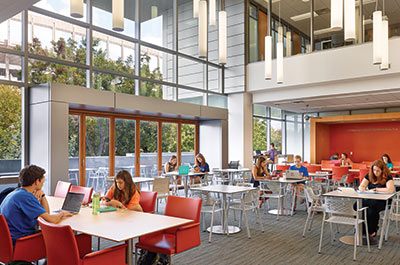Research
A Message from Associate Dean Robert Crosnoe
High-quality research and scholarship on important issues are central to the mission of the College of Liberal Arts and its service to Texas, the U.S., and the world at large. From humanistic studies of ancient cultures to population studies of timely policy issues, the research and scholarship of our faculty, graduate students, and undergraduates garners major awards, attracts millions of dollars in external funding, influences court cases and social policies, and changes how people think about themselves and the world around them, past, present, and future. The Office of Research and Graduate Studies offers concrete scaffolding to COLA faculty and students as they seek to develop ambitious programs of research and scholarship, successfully complete projects in impactful ways, and translate the knowledge gained from these projects into public use. This scaffolding includes but is not limited to providing support for the pursuit of external funding and the administration of external awards, managing a range of internal fellowship mechanisms, identifying and developing opportunities for research and scholarship, and acting as a liaison to the Office of the Vice President for Research and the Office of Sponsored Projects.
No matter the field, subject matter, or approach, the Office of Research and Graduate Studies is here to help COLA faculty and students fully realize their research and career goals.
Links TBA
Internal Fellowships for Faculty
Littlefield & Ransom Awards [TBA]
Research Travel
Professional Faculty Travel Award [TBA]
Student Travel Fund [TBA]
Undergraduate Research Opportunities
Formal Opportunities for Studies
Psychology Department (TBA)
Population Research Center (TBA)


Support for External Grants and Fellowships
College of Liberal Arts Research Support Office
UT Foundation Relations
OVPR Research Development

Support and Guidance for Research Awards and Activities
Office of the Vice President for Research, Scholarship and Creative Endeavors (OVPR)
OVPR Grants & Awards
Office of Sponsored Projects (OSP)
IDC (F&A) Costs



College Research Centers & Institutes
Center for European Studies
Center for Mexican American Studies
Center for Middle Eastern Studies
Center for Russian, East European and Eurasian Studies
Humanities Institute
Institute for Urban Policy Research and Analysis
Latino Research Institute
Population Research Center
South Asia Institute
Teresa Lozano Long Institute of Latin American Studies
All Centers & Institutes...

Engaged Scholar Initiative
The ESI project aspires to amplify the educational resources available to the Ph.D. and undergraduate fellows beyond the parameters of their traditional research disciplines, in order to increase the benefits to the scholars and the communities in which they work and live.
Learn More
Engaged Scholar Initiative
The ESI project aspires to amplify the educational resources available to the Ph.D. and undergraduate fellows beyond the parameters of their traditional research disciplines, in order to increase the benefits to the scholars and the communities in which they work and live.
Learn More



